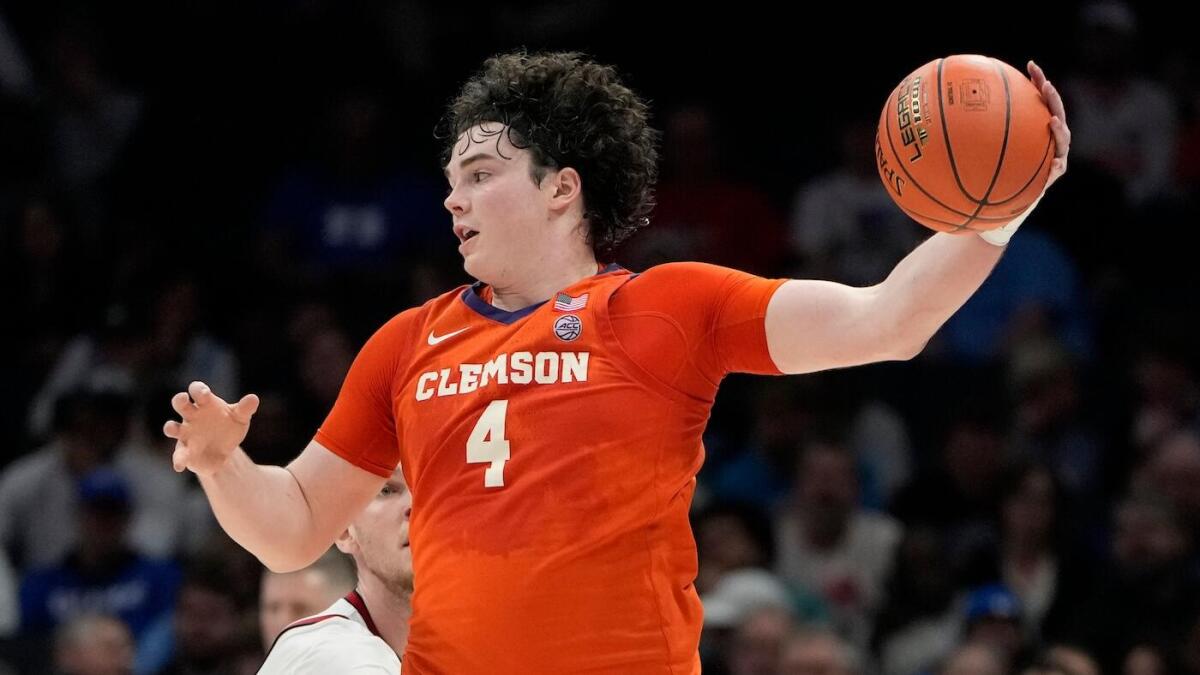The Unconventional Transition: Ian Schieffelin’s Move from Basketball to Football
In collegiate athletics, where specialization often reigns supreme, Ian Schieffelin’s decision to transition from Clemson basketball to football under coach Dabo Swinney is a fascinating case study in versatility. This move isn’t just about swapping jerseys—it’s about an athlete’s willingness to embrace challenge, a coach’s eye for untapped potential, and the evolving nature of modern sports.
Breaking the Mold: Why This Transition Stands Out
Most college athletes dedicate years to mastering a single sport, making Schieffelin’s pivot from All-ACC forward to aspiring tight end remarkable. At 6-foot-8, his frame alone makes him an intriguing football prospect, but it’s his agility, work ethic, and competitive fire that have Swinney excited.
Unlike traditional two-sport athletes who juggle both disciplines simultaneously, Schieffelin is making a full transition after exhausting his basketball eligibility. This isn’t a gimmick—it’s a calculated gamble by both player and program.
The Mechanics of the Switch: NCAA Rules and Physical Adaptation
The NCAA permits athletes to compete in a new sport if they have remaining eligibility, even after exhausting it in their original sport. For Schieffelin, this means one final year to prove himself on the gridiron.
Physical Adjustments
– Footwork & Agility: Basketball players are accustomed to lateral movement, but football requires explosive bursts and precise route-running.
– Contact Readiness: Unlike basketball’s controlled physicality, football demands absorbing and delivering hits—a skill Schieffelin must develop quickly.
– Position-Specific Training: Tight ends must block, catch, and occasionally line up as receivers. His hands, honed by rebounding, could be an asset.
Mental Shift
Football playbooks are notoriously complex. Schieffelin must learn formations, defensive reads, and play-calling terminology—a steep but not insurmountable curve.
Impact on Clemson Basketball: A Leader’s Legacy
Schieffelin wasn’t just a role player; he was a cornerstone of Clemson’s basketball identity. His departure leaves questions:
– Who fills his defensive presence and rebounding?
– Does his move inspire other athletes to explore multi-sport opportunities?
Coach Brad Brownell’s support speaks volumes. Rather than resisting the transition, he championed Schieffelin’s ambition—a reflection of Clemson’s athlete-first culture.
What Schieffelin Brings to Clemson Football
Dabo Swinney didn’t recruit Schieffelin on a whim. Here’s why this experiment could pay off:
Matchup Nightmare Potential
– At 6-foot-8, Schieffelin would tower over most linebackers and safeties, creating red-zone mismatches.
– His basketball-tested hands could translate into reliable catching ability, especially in traffic.
Depth and Versatility
Clemson’s tight end room gains an athletic wildcard. Even if Schieffelin isn’t an immediate starter, his unique skill set adds a new wrinkle to offensive schemes.
The Swinney Factor
Swinney has a history of maximizing talent in unconventional ways (see: Hunter Renfrow, a former walk-on turned NFL receiver). His belief in Schieffelin suggests he sees untapped potential.
Bigger Than Clemson: The Rise of Multi-Sport Athletes
Schieffelin’s story isn’t isolated. Recent years have seen:
– Antonio Gates: From Kent State basketball to NFL Hall of Fame tight end.
– Jimmy Graham: Another basketball convert who became a Pro Bowl tight end.
– Julian Edelman: College QB turned NFL slot receiver.
These successes prove that cross-sport transitions, while risky, can yield elite results. The common thread? Elite athleticism and adaptability.
Conclusion: Redefining the College Athlete
A Bold Bet with High Reward
Ian Schieffelin’s leap from hardwood to gridiron is more than a novelty—it’s a testament to the evolving definition of a college athlete. In an era of specialization, his willingness to reinvent himself is refreshing.
For Clemson, this move reinforces its reputation as a program that fosters opportunity. For Schieffelin, it’s a chance to etch his name alongside the Gates and Grahams of the world. And for fans? It’s a reminder that sports, at their core, are about adaptability, resilience, and the relentless pursuit of greatness.
Whether he becomes a star or a footnote, Schieffelin’s journey will be one to watch—a rare case where the story is as compelling as the stats.











